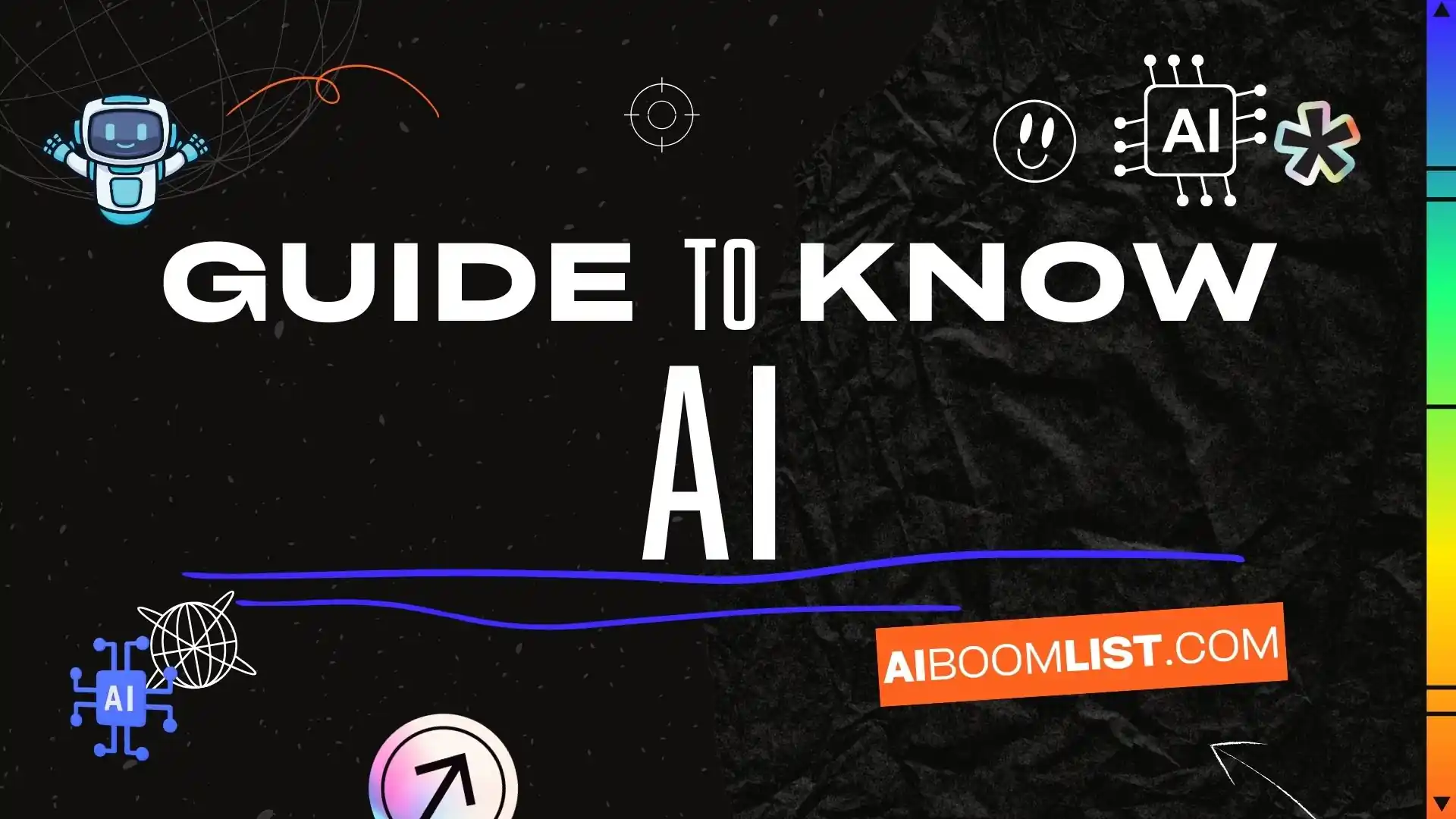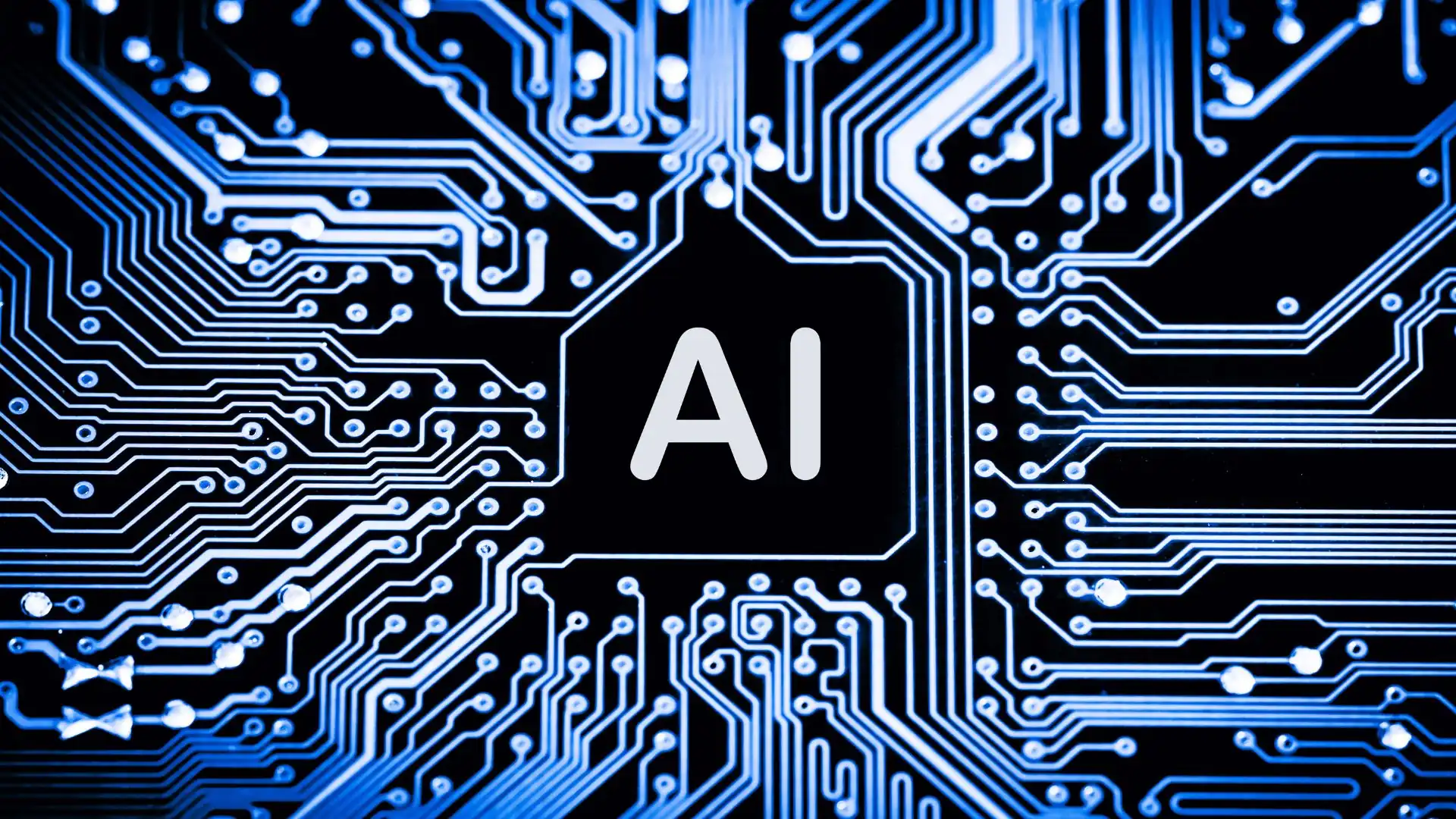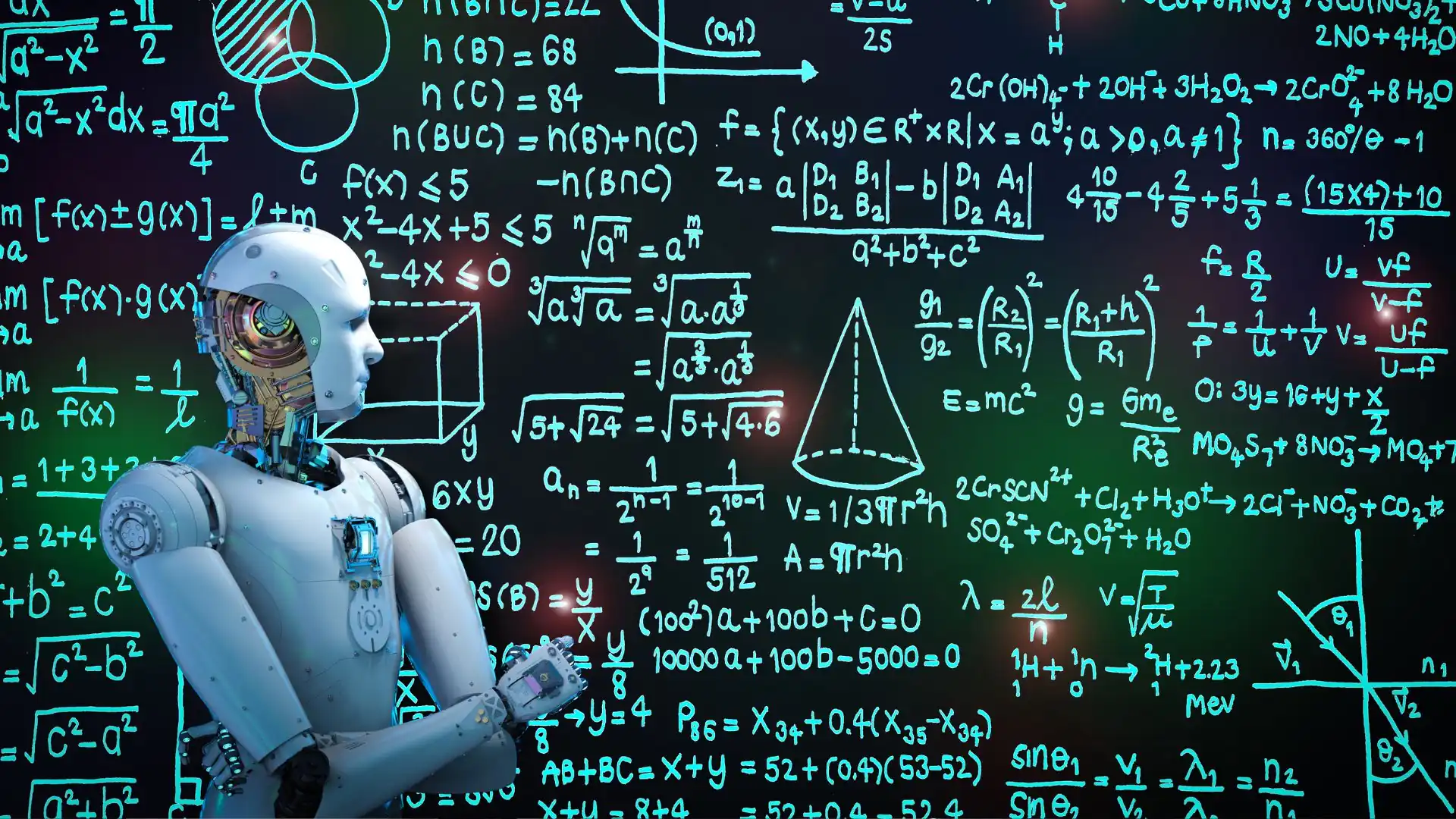Demystifying AI: A Beginner's Guide To Understanding Artificial Intelligence

Category:
Published:
19 September 2024
Artificial Intelligence (AI) is everywhere these days. From voice assistants like Siri and Alexa to self-driving cars, AI has made its mark. But for many people, it remains a bit of a mystery. What exactly is AI, and how does it work? If you're new to the topic, don’t worry. This guide will break down AI in simple terms, helping you understand its key concepts and how it's shaping our world.
To make this clearer, imagine teaching a child how to recognize a cat. Over time, the child learns to identify the cat based on its features—like its ears, eyes, and shape. Similarly, AI systems learn from data, gradually improving their ability to make decisions or predictions.
Narrow AI (Weak AI): This is the most common type of AI today. Narrow AI is designed to perform specific tasks, such as recommending videos on YouTube or assisting with customer service. It’s highly specialized, meaning it excels at one thing but doesn’t have broader capabilities.
General AI (Strong AI): This type of AI aims to replicate human intelligence in a more general sense. It would be capable of learning any task and reasoning in the same way that humans do. General AI is still largely theoretical and hasn’t been achieved yet.
Superintelligent AI: This is AI that surpasses human intelligence across virtually all fields. It’s the kind of AI you see in science fiction movies. While fascinating to think about, we are still far from creating superintelligent machines.
The key component here is machine learning, a subset of AI. Machine learning enables systems to "learn" from data without being explicitly programmed. For example, a machine learning algorithm might analyze thousands of pictures of cats and dogs to learn the difference between them. Over time, it gets better at identifying animals, even in new images.
Another important concept is neural networks, which are modeled after the human brain. These networks consist of layers of nodes (or "neurons") that process information. Neural networks are often used in deep learning, a more advanced type of machine learning that can tackle complex tasks like recognizing speech or understanding natural language.
Virtual Assistants: Siri, Google Assistant, and Alexa are all powered by AI. These voice assistants use natural language processing (NLP) to understand your commands and respond accordingly. Whether you’re asking for the weather or setting an alarm, AI is making these tasks easier.
Social Media: AI is behind the algorithms that determine what you see in your social media feed. Platforms like Facebook, Instagram, and Twitter use AI to analyze your preferences and suggest content that’s likely to interest you.
Streaming Services: Ever wonder how Netflix knows exactly what shows to recommend? AI analyzes your viewing history and compares it to what other users with similar tastes are watching. It’s this personalized recommendation system that keeps you hooked.
E-commerce: Online stores like Amazon use AI to recommend products based on your browsing history and previous purchases. AI also helps with inventory management and even determining pricing strategies.
For example, in the case of self-driving cars, AI systems rely on data from cameras, radar, and other sensors to navigate roads and make decisions in real-time. The more data an AI system gets, the better it becomes at making predictions or solving problems.
However, the quality of data is just as important as the quantity. If the data used to train an AI system is biased or inaccurate, the system's predictions can be flawed. This is why data quality and ethics are major considerations in the development of AI.
Healthcare: AI is helping doctors diagnose diseases more accurately and efficiently. Machine learning models can analyze medical images, such as X-rays or MRIs, to identify early signs of conditions like cancer. AI is also used in drug discovery, speeding up the process of finding new treatments.
Finance: AI is revolutionizing the finance industry, from fraud detection to algorithmic trading. AI can analyze patterns in financial data to spot irregularities or predict market trends, helping businesses and investors make better decisions.
Manufacturing: In manufacturing, AI-powered robots and automation systems can handle repetitive tasks, improving efficiency and safety. AI can also predict when machinery will need maintenance, reducing downtime and costs.
Transportation: Self-driving cars and trucks are powered by AI. These vehicles use a combination of sensors, cameras, and machine learning algorithms to navigate roads and make real-time decisions, such as stopping for pedestrians or adjusting speed based on traffic conditions.
Another concern is privacy. AI systems often rely on personal data to function effectively, raising questions about how that data is used and protected. Companies need to be transparent about data usage and ensure that AI systems do not compromise user privacy.
Finally, there are concerns about AI replacing human jobs. While AI can increase efficiency, some worry it could lead to job displacement. As AI technology advances, it’s crucial for society to think about how to manage these changes, ensuring that workers are supported through reskilling and new opportunities.
In the meantime, AI will keep improving the ways we work, live, and interact with technology. We’ll see smarter virtual assistants, more accurate medical diagnoses, and even more personalized experiences in entertainment and shopping. The possibilities are vast, but they also come with challenges that require careful thought and consideration.
As we continue to explore the potential of AI, it’s important to stay informed and aware of the ethical implications of this technology. Understanding AI not only helps you navigate the future, but it also opens up exciting opportunities for innovation, creativity, and progress.
So, the next time you use an AI-powered tool or service, you’ll have a better understanding of how it works and why it’s so impactful. AI is no longer just science fiction—it’s shaping the present and the future in ways we never thought possible.
What Is Artificial Intelligence?
At its core, AI refers to machines that can perform tasks that would typically require human intelligence. This includes things like learning from experience, understanding language, and recognizing patterns. In other words, AI is all about creating systems that can mimic human thinking.To make this clearer, imagine teaching a child how to recognize a cat. Over time, the child learns to identify the cat based on its features—like its ears, eyes, and shape. Similarly, AI systems learn from data, gradually improving their ability to make decisions or predictions.
Types of AI
AI isn't one-size-fits-all. There are different types based on their capabilities and functions. Broadly speaking, we can divide AI into three categories: Narrow AI, General AI, and Superintelligent AI.Narrow AI (Weak AI): This is the most common type of AI today. Narrow AI is designed to perform specific tasks, such as recommending videos on YouTube or assisting with customer service. It’s highly specialized, meaning it excels at one thing but doesn’t have broader capabilities.
General AI (Strong AI): This type of AI aims to replicate human intelligence in a more general sense. It would be capable of learning any task and reasoning in the same way that humans do. General AI is still largely theoretical and hasn’t been achieved yet.
Superintelligent AI: This is AI that surpasses human intelligence across virtually all fields. It’s the kind of AI you see in science fiction movies. While fascinating to think about, we are still far from creating superintelligent machines.
How Does AI Work?
Now that you understand what AI is, let's take a closer look at how it actually works. The secret behind AI is its ability to process vast amounts of data. By analyzing this data, AI can identify patterns, make predictions, and even make decisions on its own.The key component here is machine learning, a subset of AI. Machine learning enables systems to "learn" from data without being explicitly programmed. For example, a machine learning algorithm might analyze thousands of pictures of cats and dogs to learn the difference between them. Over time, it gets better at identifying animals, even in new images.
Another important concept is neural networks, which are modeled after the human brain. These networks consist of layers of nodes (or "neurons") that process information. Neural networks are often used in deep learning, a more advanced type of machine learning that can tackle complex tasks like recognizing speech or understanding natural language.
Everyday Examples of AI
AI might sound complex, but it’s already a big part of everyday life. Let’s explore a few examples to see how AI is used daily:Virtual Assistants: Siri, Google Assistant, and Alexa are all powered by AI. These voice assistants use natural language processing (NLP) to understand your commands and respond accordingly. Whether you’re asking for the weather or setting an alarm, AI is making these tasks easier.
Social Media: AI is behind the algorithms that determine what you see in your social media feed. Platforms like Facebook, Instagram, and Twitter use AI to analyze your preferences and suggest content that’s likely to interest you.
Streaming Services: Ever wonder how Netflix knows exactly what shows to recommend? AI analyzes your viewing history and compares it to what other users with similar tastes are watching. It’s this personalized recommendation system that keeps you hooked.
E-commerce: Online stores like Amazon use AI to recommend products based on your browsing history and previous purchases. AI also helps with inventory management and even determining pricing strategies.
The Role of Data in AI
You might be wondering, "How does AI know what to do?" The answer lies in data. AI needs large amounts of data to learn and improve. This data can come from various sources, including text, images, videos, and even sensor data from devices.For example, in the case of self-driving cars, AI systems rely on data from cameras, radar, and other sensors to navigate roads and make decisions in real-time. The more data an AI system gets, the better it becomes at making predictions or solving problems.
However, the quality of data is just as important as the quantity. If the data used to train an AI system is biased or inaccurate, the system's predictions can be flawed. This is why data quality and ethics are major considerations in the development of AI.
AI in Different Industries
AI is not just a buzzword in tech circles; it’s transforming industries across the globe. Let’s look at a few key areas where AI is making an impact:Healthcare: AI is helping doctors diagnose diseases more accurately and efficiently. Machine learning models can analyze medical images, such as X-rays or MRIs, to identify early signs of conditions like cancer. AI is also used in drug discovery, speeding up the process of finding new treatments.
Finance: AI is revolutionizing the finance industry, from fraud detection to algorithmic trading. AI can analyze patterns in financial data to spot irregularities or predict market trends, helping businesses and investors make better decisions.
Manufacturing: In manufacturing, AI-powered robots and automation systems can handle repetitive tasks, improving efficiency and safety. AI can also predict when machinery will need maintenance, reducing downtime and costs.
Transportation: Self-driving cars and trucks are powered by AI. These vehicles use a combination of sensors, cameras, and machine learning algorithms to navigate roads and make real-time decisions, such as stopping for pedestrians or adjusting speed based on traffic conditions.
Ethical Considerations of AI
As AI becomes more advanced, ethical concerns are also growing. One of the biggest issues is bias. AI systems are trained on data, and if that data reflects biases (whether racial, gender-based, or cultural), the AI can make biased decisions. For example, an AI used in hiring might unintentionally favor one gender or ethnicity over others based on biased training data.Another concern is privacy. AI systems often rely on personal data to function effectively, raising questions about how that data is used and protected. Companies need to be transparent about data usage and ensure that AI systems do not compromise user privacy.
Finally, there are concerns about AI replacing human jobs. While AI can increase efficiency, some worry it could lead to job displacement. As AI technology advances, it’s crucial for society to think about how to manage these changes, ensuring that workers are supported through reskilling and new opportunities.
The Future of AI
Looking ahead, AI will continue to evolve. Experts believe we’re on the cusp of breakthroughs that could bring us closer to General AI, or even Superintelligent AI. While these advancements sound exciting, they also raise important questions about control, safety, and responsibility.In the meantime, AI will keep improving the ways we work, live, and interact with technology. We’ll see smarter virtual assistants, more accurate medical diagnoses, and even more personalized experiences in entertainment and shopping. The possibilities are vast, but they also come with challenges that require careful thought and consideration.
Conclusion
Artificial Intelligence may seem like a complex subject, but breaking it down makes it easier to understand. At its core, AI is about teaching machines to learn and make decisions based on data. From personal assistants to self-driving cars, AI is already a part of our daily lives and is transforming industries across the world.As we continue to explore the potential of AI, it’s important to stay informed and aware of the ethical implications of this technology. Understanding AI not only helps you navigate the future, but it also opens up exciting opportunities for innovation, creativity, and progress.
So, the next time you use an AI-powered tool or service, you’ll have a better understanding of how it works and why it’s so impactful. AI is no longer just science fiction—it’s shaping the present and the future in ways we never thought possible.
Blog Category
New Blog Post

AI Revolutionizes Content Creation: How To Leverage AI Tools For Engaging

Demystifying AI: A Beginner's Guide To Understanding Artificial Intelligence

Ethical Considerations In AI: Navigating The Responsible Use Of Artificial

AI For Business: Unlocking Growth And Innovation Potential

The Future Of AI: A Glimpse Into The Exciting Possibilities Ahead

AI In Healthcare: Revolutionizing Patient Care And Medical Research

AI For Education: Enhancing Learning Experiences And Personalizing

AI For Sustainability: Addressing Global Challenges With Intelligent Solutions

